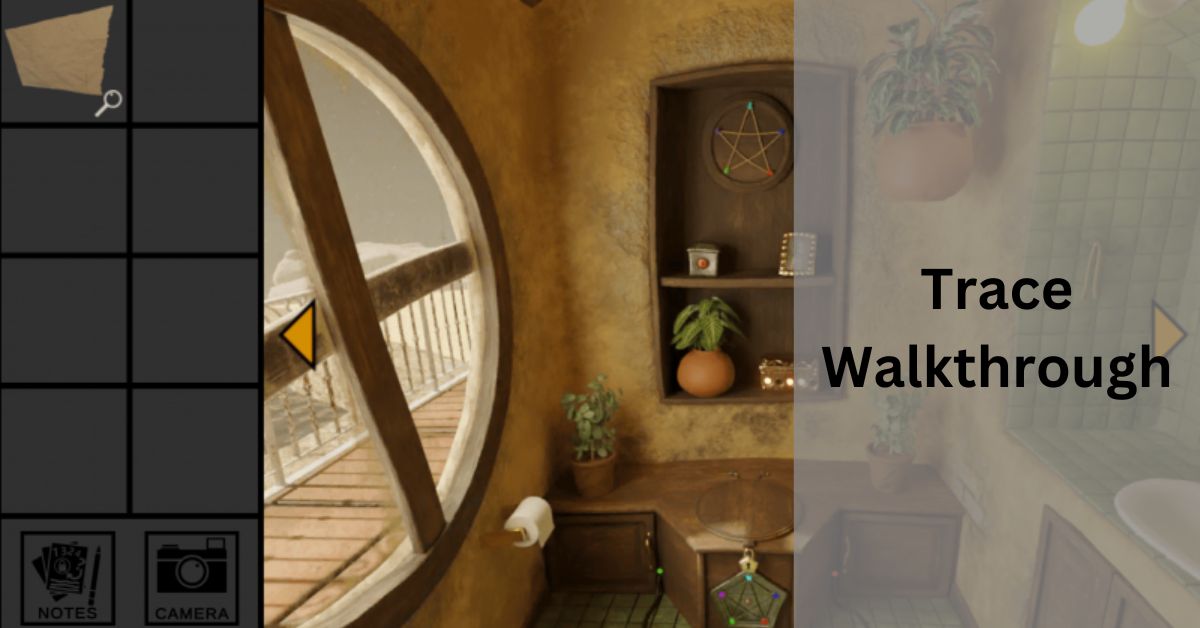Trace Walkthrough – Explore Now!
Through the trace walkthrough, I felt empowered to confidently navigate and contribute to the project with newfound clarity and expertise.
“Trace walkthrough” is a crucial technique in software development, allowing developers to understand code flow and identify issues by tracing through the program step by step.
Let’s explore Trace Walkthrough with us and uncover the intricate pathways of code execution together.
What Is Trace Walkthrough? – Click Here!
A Trace Walkthrough is like taking a walk through a maze, but instead of walls and paths, it’s about understanding how a computer program works. When we talk about tracing through a program, we mean following its steps one by one to see what happens at each point.
Just like how you might follow a recipe to make a cake, tracing a program helps us see how it runs and why it might not work as expected.

Imagine you have a map of a city, and you’re trying to figure out the best way to get from one place to another. Trace Walkthrough is like studying that map carefully to see all the streets, turns, and landmarks.
In a program, instead of streets, you have lines of code, and instead of landmarks, you have variables that hold information. By following the code step by step, we can understand how data moves around and why the program does what it does.
Think of a Trace Walkthrough as being like a detective investigating a mystery. The program is the mystery, and the detective (or the programmer) follows clues (or lines of code) to uncover how everything fits together.
Sometimes, there are surprises or unexpected twists, just like in a mystery story. But by carefully tracing through the program, we can solve the puzzle and make the program work better.
When To Use Trace Walkthrough? – Discover Today!
We use Trace Walkthrough when we want to understand how a computer program works or when we’re trying to find problems in it. It’s like using a magnifying glass to inspect each tiny detail of a picture.
We might use Trace Walkthrough when we’re trying to fix something that’s broken in a program, like when a game freezes or a website doesn’t load properly. By following the steps of the program closely, we can spot where things might be going wrong.
Another time we might use Trace Walkthrough is when we’re learning about a new program or trying to add something new to it.
It’s like exploring a new place with a map in hand. By tracing through the program, we can see how everything is connected and understand how our changes might affect the whole thing. It’s kind of like trying to figure out how a new puzzle piece fits into the bigger picture.
Lastly, Trace Walkthrough is handy when we’re working with other people on a program. Just like following directions together on a treasure hunt, we can work as a team to understand and improve the program.
By tracing through the code together, we can share ideas, catch mistakes, and make sure everyone understands how everything works. It’s like having extra eyes to help us solve the puzzle of the program.
Why Is Trace Walkthrough Important? – Get Started!
Trace Walkthrough is important because it helps us understand how computer programs work, just like how we understand a recipe by following its steps. When we can trace through a program, we can see exactly what it’s doing at each moment, like looking at a map to find the best route.
This understanding is crucial for fixing problems when something goes wrong, like when a game crashes or a website doesn’t load correctly. By tracing through the code, we can spot errors and figure out how to make things work properly again.

Another reason Trace Walkthrough is important is that it helps us learn. It’s like studying a map to learn about new places. By tracing through a program, we can see how different parts connect and work together.
This understanding helps us become better programmers because we can see how to write our own code more effectively. It’s like solving a puzzle; the more we understand how the pieces fit together, the better we can create our own puzzles.
Lastly, Trace Walkthrough is essential for working in teams. Just like how we collaborate on a group project, tracing through a program together allows us to share ideas and catch mistakes.
By working as a team, we can understand the program more thoroughly and find solutions faster. It’s like having a group of friends to help us solve a tricky problem; together, we can achieve more than we could on our own.
Read: Yeezle – Access The Full Details Now!
How To Perform A Trace Walkthrough? – Gain Knowledge!
- Select a Starting Point: Begin by choosing where you want to start tracing through the program. This could be the beginning of the code or a specific function or section you’re interested in.
- Follow the Flow: Step through the code line by line, following the path of execution. Pay attention to how the program moves from one line to the next, just like following a trail on a map.
- Analyze Control Flow: Look for conditional statements (like “if” statements) and loops. These control how the program behaves under different conditions or how many times it repeats certain actions. Understanding these helps you see the different paths the program can take.
- Inspect Data Flow: Keep track of how data is passed around and manipulated within the program. This includes variables that store information and how their values change as the program runs.
- Note Observations: Take notes as you go along. Write down anything that seems important or interesting, such as unexpected behavior or parts of the code you don’t understand.
- Verify Assumptions: Test your understanding of the program by making predictions about what will happen next and then verifying them as you continue tracing through the code.
- Document Findings: Finally, document your findings. This could include creating diagrams or flowcharts to visualize the program’s logic, or simply writing down your observations and any issues you’ve identified.
What functions or methods are being called, and in what order? – Starting Now!
To find out which functions or methods are being called and their order of execution, we need to look closely at the program’s code. Just like following a recipe step by step, we trace through the program to see which functions are called first, second, and so on.
For example, if our program starts with a function called “main(),” that’s usually the first one to be executed. Then, within “main(),” there might be other functions called, and we note down their order of execution as we go through the code.

Once we’ve gone through the code carefully, we create a list or table showing the order in which each function or method is called. This helps us understand the flow of the program and how different parts interact with each other.
It’s like making a roadmap of our journey through the program’s functions. With this roadmap, we can better understand the logic of the program and troubleshoot any issues that arise along the way.
| Order | Function/Method Called |
| 1 | main() |
| 2 | initializeVariables() |
| 3 | processData() |
| 4 | validateInput() |
| 5 | calculateResult() |
| 6 | displayOutput() |
Read: Dinar Intel Chronicles – Uncover The Facts Effortlessly!
Frequently Asked Questions:
What are some tips for effective Trace Walkthroughs?
Use debugging tools or print statements to visualize execution flow, break down complex code into smaller segments, collaborate with team members, and regularly review and update understanding of the codebase.
How can Trace Walkthroughs benefit software development?
Trace Walkthroughs can lead to better-designed, more reliable, and maintainable software by providing insights into program behavior and facilitating effective problem-solving and collaboration.
How do I document the findings from a Trace Walkthrough?
You can document your findings from a Trace Walkthrough in various ways, such as creating notes, diagrams, or flowcharts to illustrate the program’s logic and behavior.
How do I know if I’ve traced through enough of the code during a Trace Walkthrough?
A good rule of thumb is to trace through the code until you feel confident in your understanding of its behavior and logic. You may also want to stop once you’ve addressed the specific problem or question you had in mind when starting the walkthrough.
Conclusion:
“Trace walkthrough” is a crucial technique in software development, allowing developers to understand code flow and identify issues by tracing through the program step by step.
Trace Walkthroughs are vital in software development, helping developers understand, analyze, and enhance code by tracing program execution to identify errors and improve reliability.
Read:







